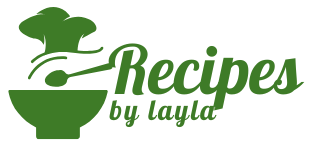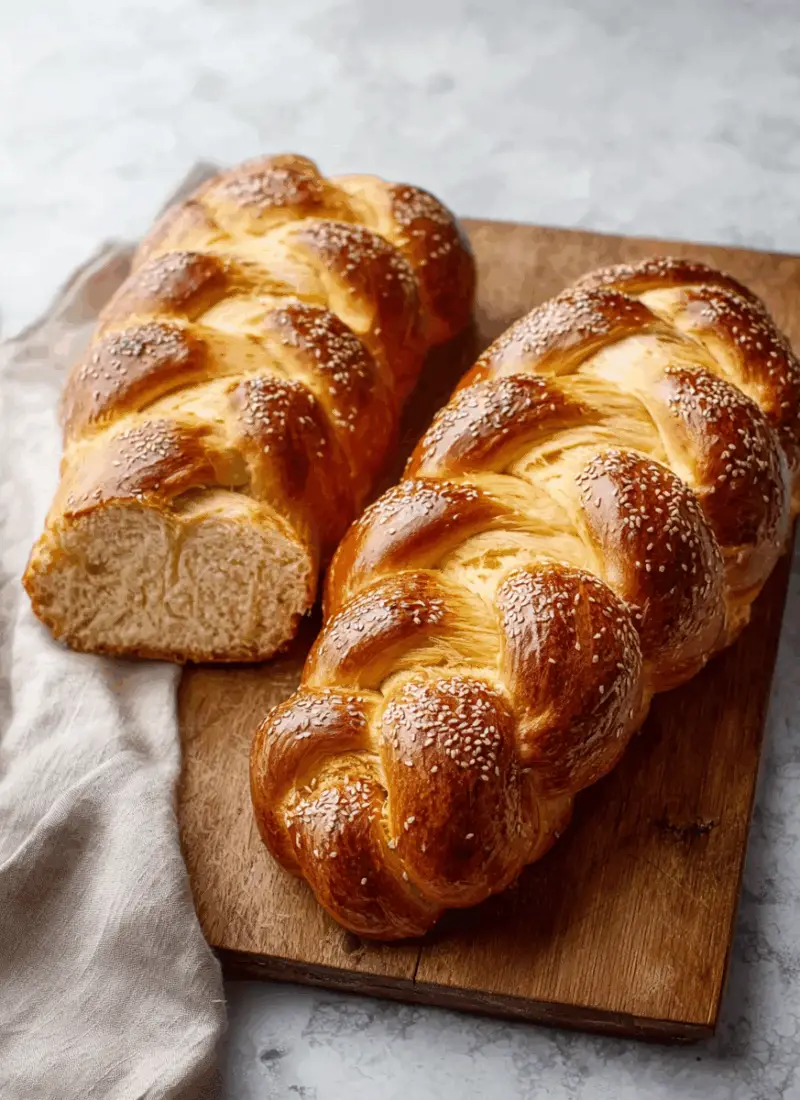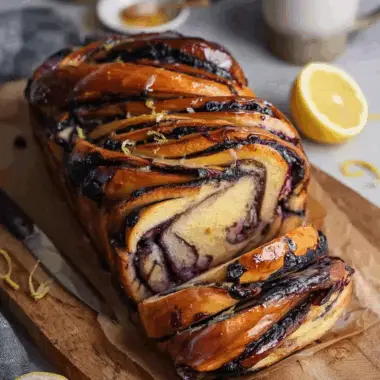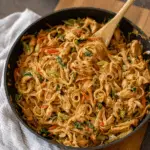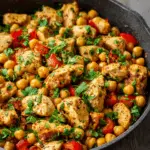Challah bread is a beloved, light, and fluffy braided loaf that’s perfect for any occasion, whether you’re making French toast, sandwiches, or simply enjoying it on its own. This traditional recipe ensures a perfect balance of sweetness, softness, and flavor, making it a staple for Jewish holidays, particularly Shabbat. The bread is made with egg yolks for a rich texture, and it’s the ideal centerpiece for your family meals.
Full Recipe:
Ingredients
For the Dough:
-
6 ½ cups (795g) bread flour
-
1/3 cup + 1 tablespoon (85g) sugar
-
2 ¼ teaspoons (14g) salt
-
2 ½ teaspoons (10g) instant yeast
-
7 ½ large egg yolks (130g), at room temperature
-
¼ cup (45g) vegetable oil
-
1-1 ½ cups (270-360ml) warm water (start with 1 cup, see notes)
-
1 large egg (for egg wash)
-
¼ cup poppy or sesame seeds (optional)
Directions
-
Prepare the Dough:
In a stand mixer, combine the flour, sugar, salt, and yeast. In a separate bowl, mix the egg yolks, oil, and warm water. Gradually add the wet mixture to the dry ingredients in the mixer, mixing until you have a shaggy dough. Switch to the dough hook and knead on low speed for about 2 minutes until the dough is smooth and stretchy. -
First Rise:
Coat the dough lightly with oil and cover it with plastic wrap. Let it rest in a warm place for 6-10 hours until it doubles in size. -
Braid the Challah:
Once the dough has risen, punch it down and divide it into two equal pieces (around 680g each). Divide each portion into strands (for a 3-strand or 4-strand braid). Roll each piece into a log and braid. Place the braided dough on a baking sheet lined with parchment paper, brush with an egg wash, and sprinkle with sesame or poppy seeds if desired. -
Second Rise:
Cover the loaves and let them rest in a warm place for about 4-5 hours or until doubled in size. -
Bake the Challah:
Preheat the oven to 350°F (175°C). Bake the challah for 25-30 minutes, turning the pans halfway through. The bread is done when it is golden brown and sounds hollow when tapped on the bottom. -
Cool and Serve:
Remove from the oven and let the challah cool on a wire rack. Serve fresh, or store at room temperature for up to 3 days.
Nutrients (Approximate per slice)
While the exact nutritional value is not provided, here’s an estimated breakdown based on the ingredients:
-
Calories: 200-250 kcal per slice
-
Fat: 8-10g
-
Saturated Fat: 1-2g
-
-
Cholesterol: 50-60mg
-
Sodium: 180-220mg
-
Carbohydrates: 30-35g
-
Fiber: 1-2g
-
Sugars: 5-7g
-
-
Protein: 5-6g
A Rich and Flavorful Dough
The hallmark of Challah bread is its rich, slightly sweet dough, which is achieved by incorporating egg yolks, oil, and sugar. The egg yolks provide a smooth, rich texture to the bread, while the sugar helps create a slight sweetness that balances the savory elements of the bread. The dough is mixed with bread flour, which helps give the bread its soft, airy texture and structure. The addition of instant yeast allows the dough to rise perfectly, making the bread light and fluffy.
While the dough itself has a wonderful texture, it is also incredibly easy to work with. After mixing the ingredients together, the dough is kneaded until smooth and stretchy, which helps activate the gluten and gives the bread its characteristic elasticity. The dough requires two rises—first, a long proofing period for about 6 to 10 hours, followed by a shorter rise after the dough is braided. This slow, patient process allows the bread to develop its deep flavor and soft texture.
The Braiding Process: A Visual and Tasty Tradition
One of the most recognizable features of Challah bread is its beautiful braid. After the dough has risen, it is divided into equal pieces, and each portion is rolled into strands, which are then braided together. The braiding of Challah is both a culinary and a visual tradition, creating a stunning loaf that is often the centerpiece of the dinner table.
Traditionally, a three-strand braid is used, but many people prefer to make a four-strand braid for a more intricate look. Once the dough is braided, it is brushed with an egg wash, which gives the bread a shiny, golden brown finish when baked. The optional topping of sesame or poppy seeds adds a final touch, giving the bread a delightful crunch and enhancing its flavor.
The Perfect Rise: Why Patience is Key
The dough requires two rises: one long, slow rise after it is mixed and another after it is braided. The first rise allows the dough to double in size, which helps develop its flavor and texture. During this period, the yeast ferments the dough, creating tiny air pockets that result in a soft, fluffy loaf.
After braiding, the second rise occurs. This final rest period allows the dough to expand further, ensuring that the loaf has a light and airy texture. It’s important not to rush this step, as a proper second rise ensures the final bread has a beautiful, soft crumb.
Baking: The Golden Brown Perfection
Once the dough has gone through both rises, it’s time for baking. The Challah is baked at a moderate temperature of 350°F (175°C) for 25-30 minutes, turning halfway through to ensure an even golden brown color. The result is a beautifully risen, soft, and golden loaf with a slight sweetness that makes each bite irresistible.
The final test for doneness is simple: when tapped on the bottom, the bread should sound hollow. This indicates that the inside is fully cooked and that the texture is light and airy.
A Versatile Bread for Any Occasion
Challah bread is incredibly versatile and can be enjoyed in many different ways. Traditionally, it is used to make French toast, especially during holidays or special breakfasts, as the bread’s slight sweetness and texture make it perfect for soaking up the custard. It also makes an excellent base for sandwiches, particularly for those looking for a bread with a rich flavor and soft texture.
Of course, Challah is also wonderful on its own, served as a side with soups or salads, or as an accompaniment to festive meals. The slight sweetness of the bread complements savory dishes beautifully, and the soft, airy texture makes it a delight to eat on its own. Whether you serve it for a special occasion or as a daily treat, Challah bread is always a welcome addition to any meal.
Nutritional Benefits of Challah Bread
While Challah is a rich and indulgent bread, it still offers some nutritional benefits, especially when enjoyed in moderation. Each slice of Challah bread typically contains between 200 and 250 calories, with around 8-10 grams of fat. The fat content primarily comes from the vegetable oil and egg yolks used in the dough, contributing to its rich, tender texture.
In addition to fat, each slice contains about 30-35 grams of carbohydrates and 5-7 grams of sugar, which come from the bread’s sweet dough. The bread also provides 5-6 grams of protein per slice, thanks to the eggs and flour used in the recipe. Though not particularly high in fiber, Challah still offers a small amount of fiber (1-2 grams per slice), which can contribute to digestive health.
For those watching their cholesterol intake, each slice contains around 50-60 mg of cholesterol, so it can be enjoyed as an occasional treat as part of a balanced diet. The sodium content is moderate, around 180-220 mg per slice, which makes it a reasonable choice for those mindful of their salt intake.
Conclusion: A Bread That Brings People Together
Challah bread is more than just a loaf—it’s a tradition that brings people together, whether for a family dinner, a special holiday, or a quiet moment with a cup of coffee. Its soft, slightly sweet, and rich texture makes it a versatile choice for a wide variety of dishes, from French toast to sandwiches to simply being enjoyed on its own.
This traditional recipe ensures that you can create a perfectly braided, golden, and fluffy Challah at home, bringing the warmth of Jewish baking into your kitchen. Whether you’re making it for a special occasion or just because, Challah bread will always be a beloved centerpiece, adding a touch of sweetness and joy to any meal.
